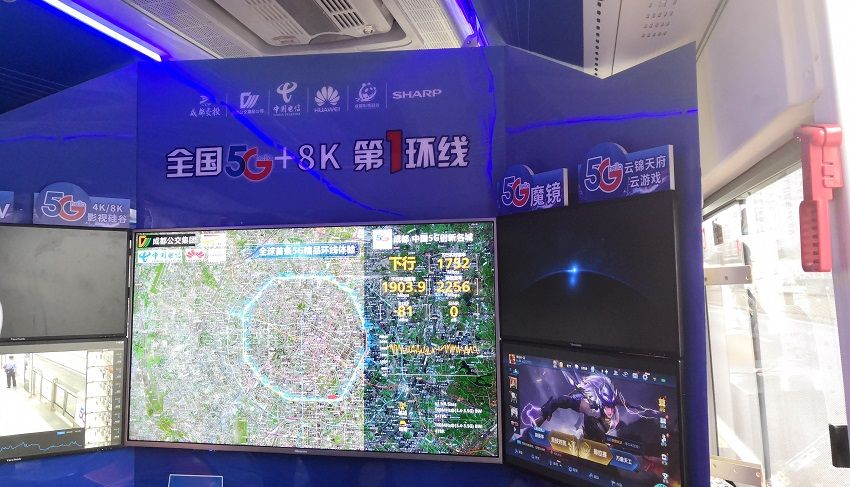PARTNER
How Huawei started a global 5G revolution
By GovInsider
Invention, real-world applications and openness are the way to go, says Huawei.

Remote surgery, rainforest protection and virtual classrooms are just some of the services Huawei’s 5G has enabled. Huawei started carrying out 5G research in 2009. Today, ten years later, they have secured over fifty 5G commercial contracts worldwide and they are collaborating with multiple organisations around the world to realise new applications.
We spoke to Huawei, one of the world’s leading providers for 5G services and infrastructure, to understand what they are doing to propel the 5G revolution.
Invention instead of innovation

William Xu, Director of the Board and President of the Institute of Strategic Research at Huawei, emphasised the need to go beyond innovation at the company’s Asia Pacific Innovation Day 2019. Invention must be the focus instead. And where better to find the inventors of tomorrow than in the students of today? That is why Huawei is committed to working with universities. Huawei is currently spending 300 million yuan (USD 42 million) to fund basic research programmes and fundamental theorem studies in several Chinese universities, and “this amount will only increase,” promised Xu.
This approach is helpful for the universities as well. “Real-world knowledge about the industries is important to professors,” shared Xu. He shared that Huawei’s collaboration with universities has been warmly welcomed by academic staff thus far. “These research results do not belong to Huawei; they’re shared with the world,” said Xu. “These learnings can in turn help to develop solutions targeting real-world issues, to bring about social and economic value,” he added.
Real-world solutions
Technology isn’t choosy - it’s not a tool limited to any particular industry. “ICT as a platform is very important in growing all industries,” said Xu. “We need to think about how to apply this technology to different verticals,” Xu said. That is the baseline of Huawei’s approach to 5G applications. Add 5G and AI applications to the mix, and we have a potent recipe for growth across all sectors.
However, as a forerunner in 5G, it can be difficult to know which direction to grow in. After all, nobody has done what Huawei is doing. For Xu, the only way forward is to keep customer needs in mind and anticipate the services that they need. “We have to start with an assumption of the future,” he said.
These “assumptions” have realised tangible advancements in several industries across the world. Huawei’s 5G applications position paper highlighted five emerging areas in which 5G can help globally: telecommunications, manufacturing, media and entertainment, transport and healthcare.
Advancements

In the transport sector, for example, Huawei and China Mobile partnered to conduct remote driving trials using ordinary consumer cars in 2017. Drivers were able to maintain full control of the vehicle even though they were 30km away. The 5G network enabled drivers access to a HD, 240-degree live view of the car’s surroundings. Buses affixed with 5G connectivity have also started running along certain routes in Chengdu.
5G has allowed for vast leaps in progress in the healthcare industry. The Third People’s Hospital of Chengdu has begun using remote ultrasound on patients living in rural regions. Additionally, trials for remote diagnosis and surgery are currently ongoing in hospitals across China. Doctors based in different hospitals can now consult one another on specific patient conditions, which can be broadcast live in real time. This means that patients no longer have to travel to a different town if they would like to receive treatment from a particular doctor. Doctors will soon also be able to perform surgery remotely on patients who are miles away, thanks to lag time-free controls enabled by 5G.
Huawei will also partner with Swiss telco Sunrise and Swiss agricultural research centre Agroscope to build a 5G-powered smart farm in Tanikon. The Swiss Future Farm is set to serve as a “unique platform in Europe when it comes to new technologies in agriculture and in the food industry,” said Nadja El Benni, Head of Competitiveness and System Evaluation of Agroscope. On top of that, Huawei sees a lot of potential in increasing and improving connectivity in rural regions like farms, to reduce the digital divide. “We will develop innovative applications that use the 5G network to enable efficient working as well as a reduction in energy consumption,” said Haitao Wang, CEO of Huawei Switzerland.
What this means for governments around the world
5G will reshape the public service industry, and Huawei recognises that. Keeping in line with their determination to provide real-world solutions using innovative technology, Huawei is ready to integrate existing technology with 5G-enabled technology to adapt to public sector needs. “We have conducted a lot of research in this regard, and the next step is to examine the needs of the public sector,” said Ritchie Peng, Chief Marketing Officer of the Wireless Network Product Line at Huawei.
Openness is another important ingredient in the uptake of 5G in government. “We look forward to having open collaborations with governments, where everyone takes out the best technology to share with one another,” said Peng.
At the end of the day, 5G is just another step forward in tech. What will really make it revolutionary is the improvements it brings to human lives. With a strong focus on research skills development, delivering people-centric solutions and open collaborations, Huawei is truly setting the bar high for how organisations approach not just 5G, but all emerging technologies as well.